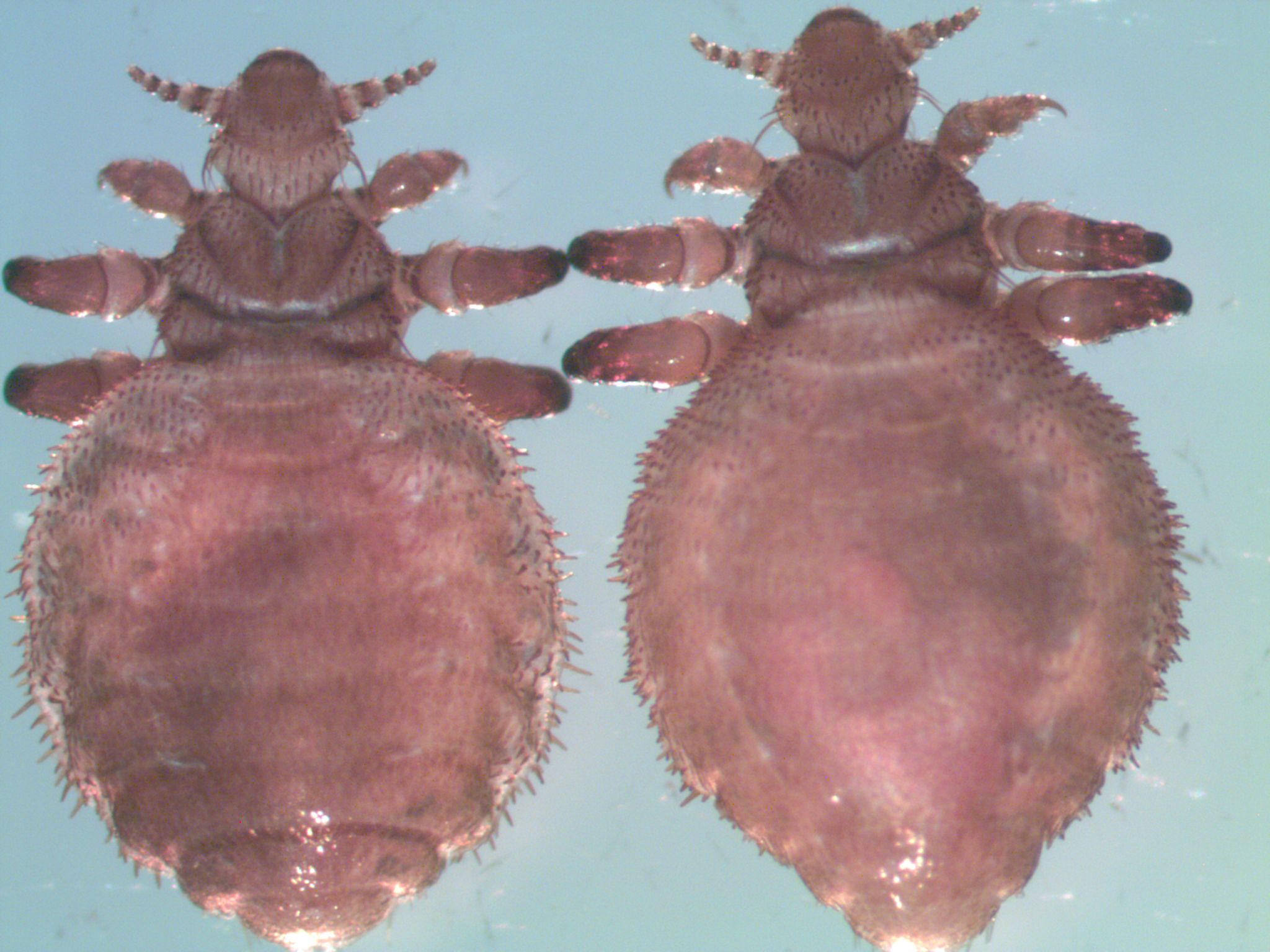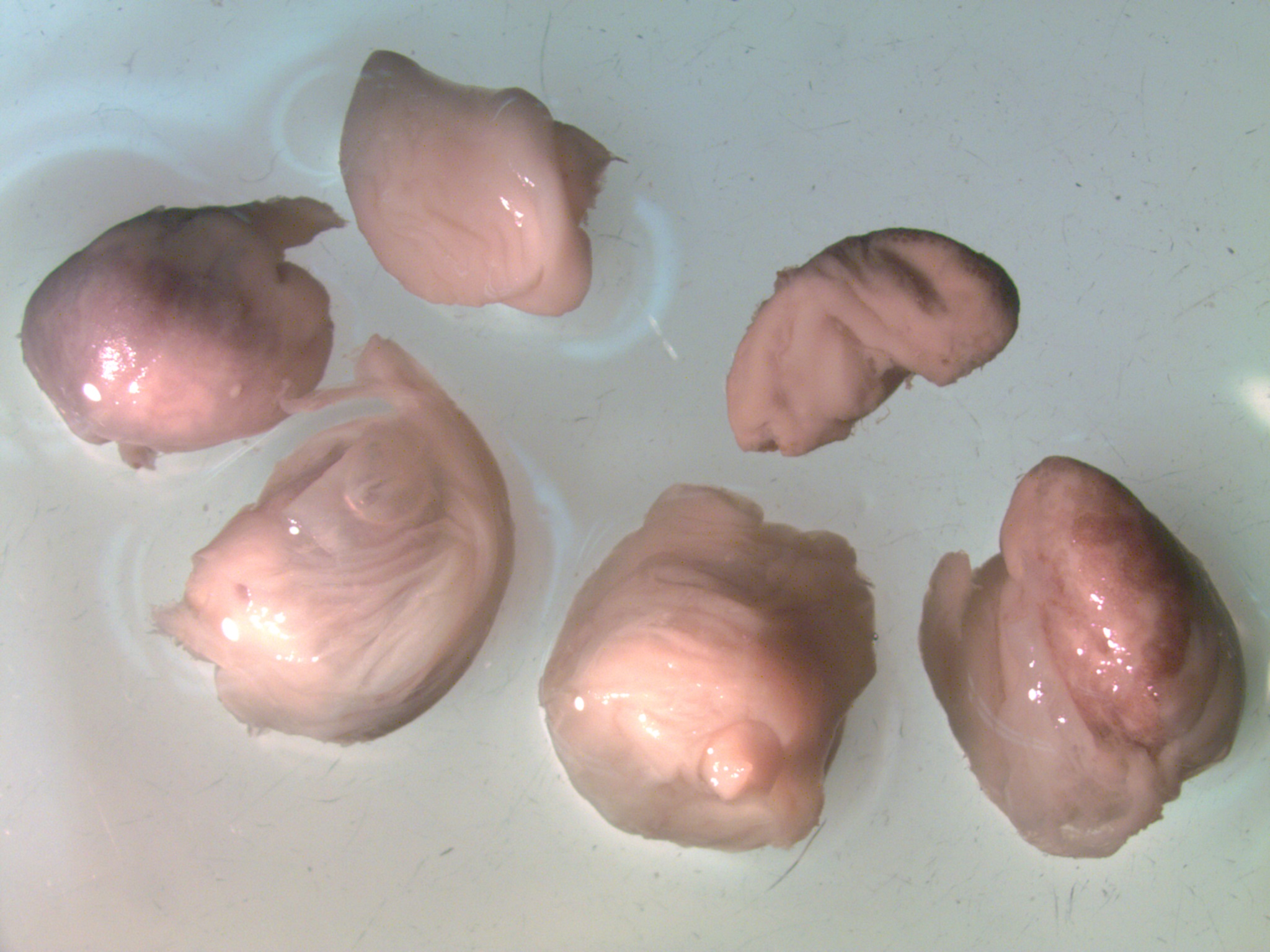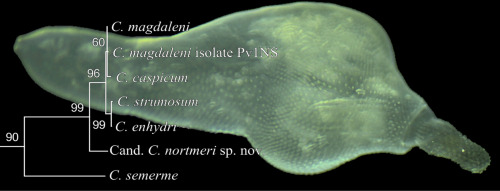Blog
Marine Mammal Parasite of the Month- November 2021
This parasite is an insect from the suborder Anoplura, which consists of sucking lice. Like other insects, they have antennae, a thorax, an abdomen, and legs. Unlike other insects, they have no eyes, and their mouth contains 2 rows of 4 large hooks. Their thorax is shaped like a trapezoid and covered in long hairs […]
Marine Mammal Parasite of the Month- October 2021 Answer
This parasite is Braunina cordiformis! Remember last time how we said it was heart shaped? Well, cordiform means heart shaped, so its scientific name is actually based on its shape! This parasite is the only species in the family Brauninidae and is found in the fundic (main) and pyloric stomachs and duodenal ampullae. It’s thought […]
Marine Mammal Parasite of the Month- October 2021
This parasite is a helminth, also known as a parasitic worm, in the Trematoda class. It’s classified as a flatworm called a fluke and is found in cetaceans, primarily those in the family Dephinidae. It been found in bottlenose dolphins, dusky dolphins, Commerson’s dolphins, short beaked common dolphins, tucuxi, estuarine dolphins, Chilean dolphins, rough-toothed dolphins, […]
Marine Mammal Parasite of the Month- August 2021
This marine mammal parasite is a part of the acanthocephalan family but only has one species for a primary host, the sea otter. This parasite is found in sea otters of all ages, the youngest being 1 month old. Since sea otters are introduced to solid food at around 3 weeks of age by their […]
Marine Parasite of the Month July 2021-Answer
The parasite for this month was the Loxothylacus panopaei, which is often just referred to as a crab barnacle that can change the gender of a crab. The most common way to identify this parasite is by looking on the underside of the crab for what looks like an egg sac, but is really a […]
Marine Parasite of the Month- July 2021
Some parasites can do crazy things, but this month’s parasite can actually change the gender of a crab. A mud crab-specific parasite, this organism is an invasive barnacle, and commonly found in the Chesapeake Bay area as well as the Gulf of Mexico, the Caribbean, and other parts of Florida. It is speculated that they […]
Marine Mammal Parasite of the Month- Answer June 2021
The parasite for this month was Toxoplasma gondii, the toxoplasmosis disease-causing parasite. When marine mammals contract this disease, they can have many different symptoms such as anorexia, increased temperatures, swollen tonsils, and flipper lesions. In a study done by the United States Department of Agriculture, it was found that T. gondii caused mortality in sea […]
Marine Mammal Parasite of the Month- June 2021
This parasite is a protozoan that infects most warm-blooded animals, including humans, and causes the disease toxoplasmosis. As far as marine mammals go, this parasite has been observed in sea otters, manatees, harbor seals, northern fur seals, sea lions, and many cetacean species. Humans can become infected by several routes, including eating under-cooked meat of […]
Marine Mammal Parasite of the Month Answer- April 2021
This parasite is the marine mammal lungworm! Here at NMLC the most common lung worm infections we see present in our seals are Otostrongylus circumlitus and Parafilaroides gymnurus. These are mostly found during routine fecal analysis of our seals, but can also be seen during necropsies as well. Some of the first signs of a […]
Marine Mammal Parasite of the Month- April 2021
This type of parasite is common in pinnipeds and there are two different species commonly seen in the seals here at NMLC. Their life cycle remains a small mystery to researchers as there’s not much information regarding it, but patterns reveal that fish are the perfect intermediate hosts for these parasites. The adult form can […]






